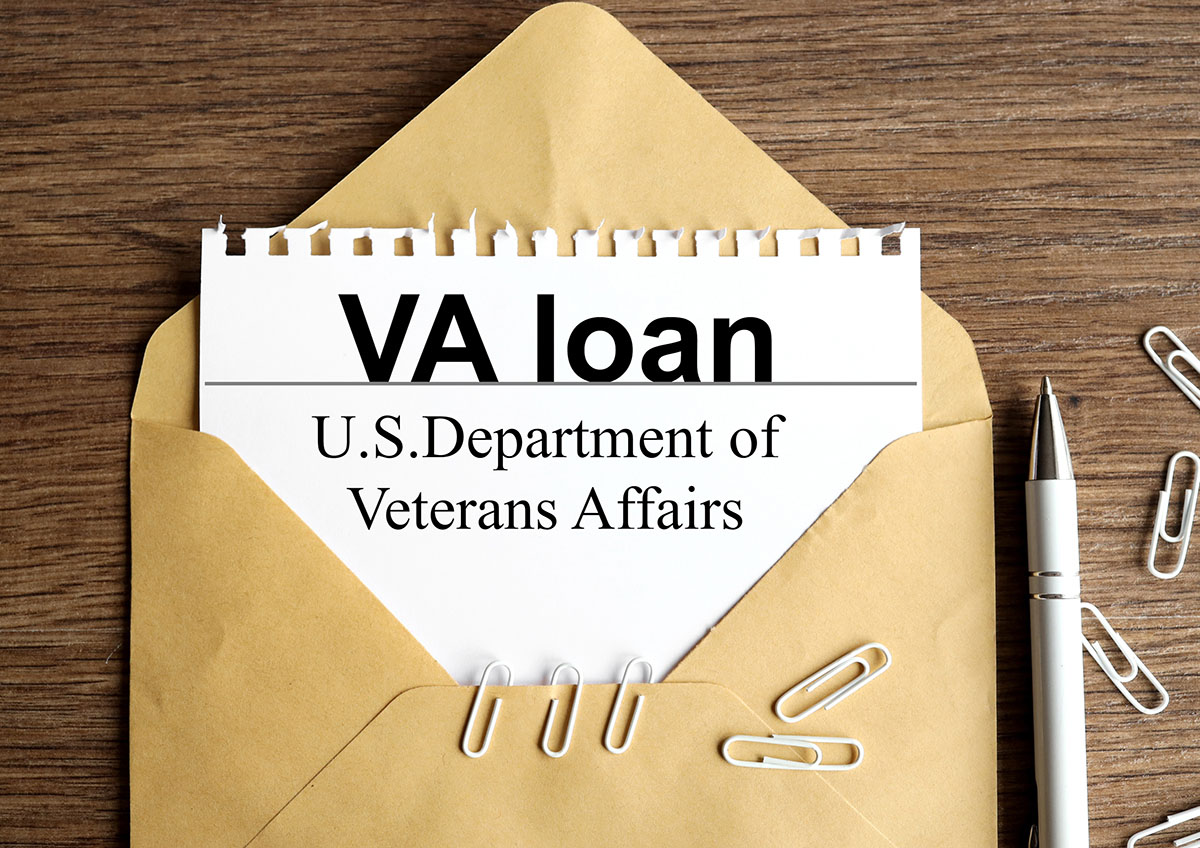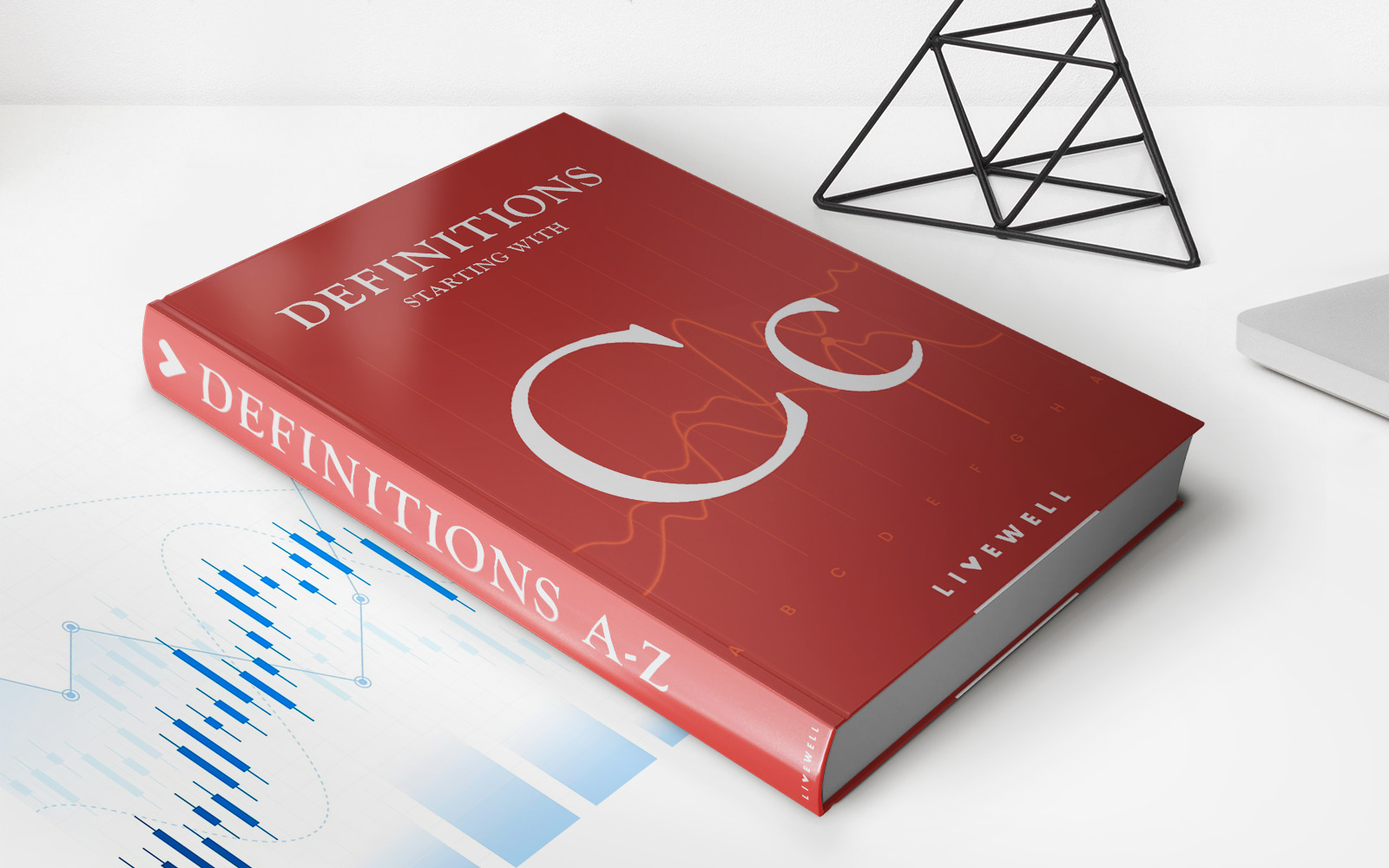

Finance
How Long Is The Term Of A Small Business Loan?
Modified: December 29, 2023
Discover the length of a small business loan term and how it impacts your finances. Understand the duration and repayment options available for financing your business.
(Many of the links in this article redirect to a specific reviewed product. Your purchase of these products through affiliate links helps to generate commission for LiveWell, at no extra cost. Learn more)
Table of Contents
Introduction
Small business loans play a crucial role in helping entrepreneurs kickstart their ventures, expand their operations, or cover unforeseen expenses. Whether you need funds to purchase equipment, hire additional staff, or launch a new marketing campaign, a small business loan can provide the necessary capital. However, one important aspect to consider when applying for a loan is the term or duration of the repayment.
In simple terms, the term of a small business loan refers to the length of time you have to repay the borrowed funds, along with any interest and fees. The loan term can vary significantly depending on various factors, such as the lender, the type of loan, and the borrower’s creditworthiness.
In this article, we will delve into the world of small business loans and explore the different factors that can affect the term of a loan. We will also discuss the pros and cons of short-term, medium-term, and long-term loans, helping you make an informed decision about the right loan term for your small business.
So, whether you’re a budding entrepreneur searching for startup funds or an established business owner looking to finance an expansion project, keep reading to gain valuable insights into the term of small business loans and how to choose the best option for your needs.
Overview of Small Business Loans
Small business loans are a vital source of funding for entrepreneurs and business owners. These loans are specifically designed to meet the financial needs of small businesses, providing them with the necessary capital to support their growth and operations.
There are various types of small business loans available, including traditional bank loans, government-backed loans, online lenders, and alternative financing options. Each type of loan has its own eligibility criteria, interest rates, repayment terms, and borrowing limits.
The funds obtained through a small business loan can be used for a variety of purposes. Some common uses of these loans include:
- Starting a new business
- Expanding an existing business
- Purchasing equipment or inventory
- Hiring and training employees
- Refinancing existing debt
- Marketing and advertising initiatives
- Managing cash flow
- Investing in technology and infrastructure
Small business loans come with different terms, interest rates, and repayment structures. The term of a loan refers to the length of time the borrower has to repay the loan. Small business loan terms typically range from a few months to several years.
It’s important to note that the approval process for small business loans can be more stringent compared to personal loans. Lenders typically assess various factors such as the borrower’s credit score, business plan, financial projections, collateral, and previous business experience before approving a loan application.
Before taking out a small business loan, it’s crucial to thoroughly evaluate your financial needs and repayment capabilities. Understanding the different loan options available, along with their terms and conditions, can help you choose the most suitable option for your specific business requirements.
In subsequent sections, we will explore the factors that affect the term of a small business loan and discuss the advantages and disadvantages of short-term, medium-term, and long-term loans.
Factors Affecting the Term of a Small Business Loan
When determining the term of a small business loan, lenders take into account several factors that can influence the repayment duration. Understanding these factors can help you navigate the loan application process and choose the most suitable loan term for your business. Here are some key factors that can affect the term of a small business loan:
- Loan Amount: The amount of money you borrow will play a significant role in determining the loan term. Generally, larger loan amounts tend to have longer repayment terms to allow businesses more time to repay the debt.
- Borrower’s Creditworthiness: Lenders assess the creditworthiness of borrowers by considering their credit scores, credit history, and financial stability. Borrowers with better credit scores and a strong financial track record are more likely to receive longer loan terms.
- Type of Loan: The type of loan you choose can also impact its term. For example, traditional bank loans generally have longer terms compared to short-term working capital loans or lines of credit. Loans backed by the Small Business Administration (SBA) can have terms of up to 25 years, which makes them suitable for long-term financing needs.
- Borrower’s Industry: Some industries have inherently longer or shorter loan terms based on their specific nature and cash flow patterns. For instance, industries with longer business cycles, such as manufacturing or construction, may qualify for longer loan terms compared to retail or service-oriented businesses with shorter cycles.
- Collateral: Offering collateral, such as real estate, inventory, or equipment, can affect the loan term. Lenders may be more willing to provide longer term loans if they can secure the loan with valuable assets.
- Revenue and Cash Flow: Lenders often evaluate a business’s revenue and cash flow stability to determine the loan term. If your business demonstrates consistent and sufficient cash flow, it may qualify for a longer-term loan.
It’s important to note that these factors can vary among lenders and loan programs. Each lender may have specific eligibility criteria and guidelines for determining loan terms. Work closely with potential lenders to understand their requirements and how they evaluate loan terms.
Next, we will discuss the different types of small business loan terms, including short-term, medium-term, and long-term loans, and the benefits and limitations of each option.
Short-Term Small Business Loans
Short-term small business loans are designed to be repaid over a relatively short period, typically ranging from a few months to a year. These loans are ideal for businesses requiring immediate financing to address temporary cash flow gaps, cover unexpected expenses, or take advantage of short-term opportunities.
Here are some key characteristics of short-term small business loans:
- Quick Access to Funds: Short-term loans often have a simplified application process, allowing businesses to access the funds they need quickly. Some lenders may even provide same-day approval and funding.
- Higher Interest Rates: Short-term loans tend to have higher interest rates compared to loans with longer terms. Lenders charge higher interest rates to compensate for the increased risk associated with shorter repayment periods.
- Flexible Repayment Structure: Short-term loans typically require regular, often weekly or monthly, payments of principal and interest. These frequent payments can be an advantage for businesses with steady cash flow, as they can repay the loan more quickly.
- Lower Borrowing Limits: Due to the shorter repayment period, short-term loans generally have lower borrowing limits. Lenders may offer amounts based on the business’s revenue or a percentage of its accounts receivable or inventory.
- Minimal or No Collateral: Some short-term loans can be obtained without collateral. Borrowers with strong credit scores and cash flow may qualify for unsecured short-term loans.
Short-term small business loans can be a suitable option for businesses that need immediate funds for short-term needs but are confident they can quickly repay the loan, effectively managing the higher interest rates. Examples of when short-term loans can be beneficial include covering seasonal inventory expenses, funding a marketing campaign, or managing unexpected expenses.
However, it’s essential to carefully evaluate your business’s financial situation and projected cash flow before applying for a short-term loan. While these loans provide quick access to funds, the shorter repayment period can put pressure on your cash flow. Make sure you can comfortably make the required payments and still meet your ongoing financial obligations.
Next, we will explore medium-term small business loans and their specific characteristics.
Medium-Term Small Business Loans
Medium-term small business loans provide a balance between short-term and long-term financing options. These loans typically have repayment terms ranging from one to five years, making them suitable for businesses that need funds for a more extended period but not necessarily over a decade.
Here are some key features of medium-term small business loans:
- Extended Repayment Period: Unlike short-term loans, medium-term loans provide borrowers with a longer timeframe to repay the borrowed funds. This can help businesses manage their cash flow more effectively, as they have a more extended period to generate revenue and repay the loan.
- Competitive Interest Rates: Medium-term loans often come with lower interest rates compared to short-term loans. Lenders view these loans as less risky due to the longer repayment period and are, therefore, willing to offer more favorable interest rates.
- Borrowing Limits: Medium-term loans generally offer higher borrowing limits compared to short-term loans. Lenders may consider various factors, such as the business’s revenue, assets, and creditworthiness, to determine the borrowing limit.
- Collateral or Personal Guarantees: Depending on the lender and the specific loan program, medium-term loans may require collateral or personal guarantees to secure the loan. Providing collateral can enhance the chances of approval and may result in more favorable terms.
- Flexible Use of Funds: Medium-term loans provide businesses with the flexibility to use the funds for various purposes, such as purchasing equipment, expanding operations, or investing in marketing and advertising strategies.
Medium-term small business loans are well-suited for projects that require a more significant investment, such as purchasing new equipment or renovating a commercial space. The longer repayment period allows businesses to spread out the cost over several years, reducing the impact on monthly cash flow.
However, it’s important to carefully evaluate your business’s ability to repay the loan over the medium term. Consider your projected revenue and expenses, as well as any potential challenges or market uncertainties that may impact your ability to make consistent loan payments.
Next, we will discuss long-term small business loans and their unique features.
Long-Term Small Business Loans
Long-term small business loans are designed for businesses that require significant capital for extended periods. These loans typically have repayment terms exceeding five years, providing businesses with the flexibility to make lower monthly payments for a more extended period.
Here are the key characteristics of long-term small business loans:
- Extended Repayment Period: Long-term loans have the longest repayment terms among small business loans. The extended period allows businesses to make more manageable monthly payments, as the loan is spread out over several years.
- Lower Monthly Payments: Due to the longer repayment period, long-term loans offer lower monthly payments compared to short-term and medium-term loans. This can be beneficial for businesses with limited monthly cash flow.
- Competitive Interest Rates: Long-term loans often come with competitive interest rates, similar to medium-term loans. Lenders consider the longer repayment period and stability of businesses when determining the interest rates.
- Higher Borrowing Limits: Long-term loans generally offer higher borrowing limits compared to short-term and medium-term loans. This allows businesses to secure the necessary funds for substantial investments, such as real estate acquisitions or large-scale equipment purchases.
- Collateral or Personal Guarantees: Depending on the lender and the loan program, long-term loans may require collateral or personal guarantees. Providing collateral can enhance the chances of approval and may result in more favorable terms.
- Investment in Growth: Long-term loans are ideal for businesses that want to invest in long-term growth initiatives, such as expanding into new markets, developing new products or services, or acquiring other businesses.
Long-term small business loans provide businesses with the stability and financial support required for their long-term growth and expansion plans. The lower monthly payments allow businesses to allocate more funds towards operational expenses, marketing efforts, and other growth-oriented activities.
However, it’s crucial to carefully assess your business’s ability to manage the loan over the extended term. Consider your cash flow projections, market conditions, and any potential changes in your business’s needs or circumstances that may impact your ability to meet long-term loan obligations.
Now that we have explored the characteristics of short-term, medium-term, and long-term small business loans, let’s examine the pros and cons of each option in the next section.
Pros and Cons of Different Loan Terms
When considering a small business loan, it’s crucial to carefully weigh the pros and cons of different loan terms. Each loan term – short-term, medium-term, and long-term – offers distinct advantages and limitations. Understanding these factors will help you make an informed decision regarding the best loan term for your business. Let’s explore the pros and cons of each option:
Short-Term Small Business Loans:
Pros:
- Quick access to funds, allowing for immediate financing needs
- Flexible repayment structure with regular payments that can be suitable for businesses with steady cash flow
- Smaller total interest paid due to the shorter repayment period
Cons:
- Higher interest rates compared to longer-term loans
- Short repayment period can put strain on business cash flow
- Lower borrowing limits
Medium-Term Small Business Loans:
Pros:
- Extended repayment period with lower monthly payments
- Competitive interest rates
- Higher borrowing limits compared to short-term loans
Cons:
- May require collateral or personal guarantees
- Longer repayment period may result in higher total interest paid
- Not suitable for short-term financing needs
Long-Term Small Business Loans:
Pros:
- Low monthly payments due to extended repayment period
- Competitive interest rates
- Higher borrowing limits for substantial investments
Cons:
- Longer repayment period may result in higher total interest paid
- May require collateral or personal guarantees
- Not suitable for short-term or immediate financing needs
Choosing the right loan term depends on your business’s unique needs, financial situation, and repayment capabilities. Consider factors such as the purpose of the loan, cash flow projections, potential interest costs, and the impact on your business’s overall financial health. It’s advisable to work closely with lenders and financial advisors to assess all available options and make an informed decision.
Next, we will discuss how to choose the right loan term for your small business.
How to Choose the Right Loan Term for Your Small Business
Choosing the right loan term for your small business is a critical decision that can have a significant impact on your financial stability and growth. To make an informed choice, you need to consider several factors. Here are some steps to help you choose the right loan term:
1. Assess Your Financing Needs:
Start by evaluating your business’s specific financing needs. Determine the purpose of the loan and the amount of capital required. Consider whether the funding is for short-term expenses, such as inventory replenishment, or long-term investments, such as equipment purchases or business expansion.
2. Evaluate Your Cash Flow:
Assess your business’s cash flow and determine the repayment amount you can comfortably manage. Consider your monthly revenue, existing expenses, and any potential fluctuations in income. Be realistic about your ability to make regular loan payments without jeopardizing your day-to-day operations.
3. Consider the Cost of Borrowing:
Examine the total cost of borrowing for each loan term. Shorter-term loans may have higher interest rates but result in lower total interest payments due to the shorter repayment period. Longer-term loans may offer lower monthly payments but accumulate more interest over time. Evaluate the overall cost and strike a balance between monthly affordability and long-term interest expenses.
4. Review Your Business’s Stability:
Consider the stability and projected growth of your business. If you anticipate rapid expansion or increased revenue in the near future, a shorter-term loan may be more suitable as it allows you to repay the debt quickly. For businesses with a steady growth pace, a medium-term or long-term loan might better align with their financial objectives.
5. Assess Your Collateral or Guarantees:
Understand the collateral or personal guarantees that lenders may require for different loan terms. Evaluate the impact of providing collateral or personal guarantees on your business and personal finances. Determine if you have the necessary assets or guarantees and weigh the risks and benefits of securing the loan.
6. Seek Professional Advice:
Consider consulting with financial advisors, accountants, or business mentors to gain insights and guidance on choosing the right loan term. These professionals can help you analyze your financials, evaluate loan options, and make an informed decision based on your unique circumstances.
By following these steps and carefully considering your business’s needs, cash flow, borrowing costs, stability, and collateral, you’ll be in a better position to choose the loan term that aligns with your business goals and financial capabilities.
Lastly, let’s conclude our discussion on small business loan terms.
Conclusion
Choosing the right loan term for your small business is a crucial decision that can significantly impact your financial stability and growth. Short-term, medium-term, and long-term small business loans all have their advantages and disadvantages, and it’s essential to carefully consider your business’s needs, cash flow, and repayment capabilities when making a decision.
Short-term loans offer quick access to funds and can be suitable for businesses with immediate financing needs. However, they come with higher interest rates and shorter repayment periods, which can strain your cash flow. Medium-term loans provide a balance between short-term and long-term options, with competitive interest rates and extended repayment periods. These loans are ideal for businesses requiring funds for a moderate period. Long-term loans offer lower monthly payments and competitive interest rates, making them suitable for businesses with significant investments and long-term growth plans.
When choosing the right loan term, assess your financing needs, evaluate your cash flow, consider the cost of borrowing, review your business’s stability, and assess the collateral or guarantees required. Seek professional advice to gain additional insights and guidance on selecting the most appropriate loan term for your specific circumstances.
Remember that each loan term has its own pros and cons, and there is no one-size-fits-all solution. It’s important to align the loan term with your business goals, financial capabilities, and overall business strategy.
By making a well-informed decision about the loan term, you can effectively manage your business’s finances, capitalize on growth opportunities, and ensure sustainable success in the long run.
Whether you opt for a short-term, medium-term, or long-term small business loan, make sure to work closely with lenders and financial advisors to navigate the loan application process and secure the funding that best suits your business’s unique needs.














